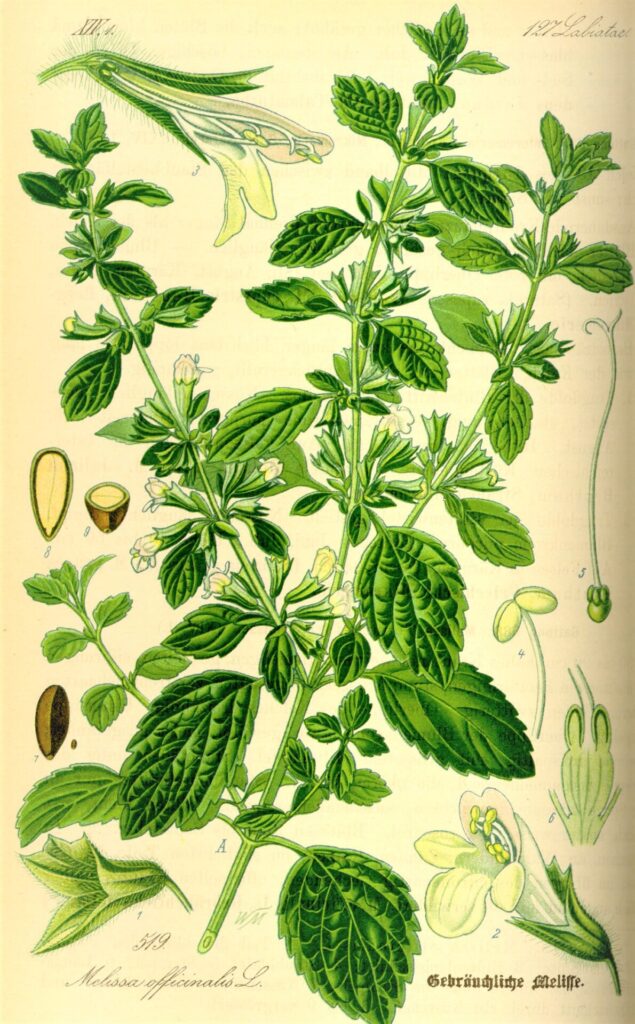Lemon balm, is a perennial herb, so it will die down in the winter and regrow
from the roots in the spring. Don’t worry if your plants die in the cold weather. It’s also
known as Melissa, bee balm, common balm, or mint balm and is a popular herb used to promote
health and well-being. It is a calming herb that belongs to the mint family. Lemon balm has
lemon-scented, oval, toothed leaves that are heavily veined or quilted from 2 to 3 inches
long arranged opposite one another on four-sided stems. Leaves are coarsely toothed with a
bristly surface. As its name implies, it has a lemony flavor that makes it ideal to use for tea, salads, herbal infusions, and other dishes. It is loved by bees and therefore an important herb to grow
near your honey bee hives.






